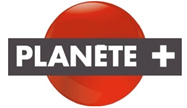A recent decision by the General Court deals with the weight of figurative elements in the overall impression of a sign.
Facts
The applicant applied for the registration of the following sign as an EU trademark for ‘publication of printed matter for advertising purposes’ (class 35) and for ‘entertainment services’ in class 41:

The intervener filed an opposition on the basis of the following earlier registration for identical services:

The Opposition Division found that there was likelihood of confusion and upheld the opposition. The Board of Appeal (BoA) dismissed the applicant’s appeal. The applicant contested this decision before the General Court (GC).
Decision
The GC denied the likelihood of confusion and upheld the action:
It found that the BoA incorrectly assessed the overall impression of the marks. While the words “Planet” and “Planéte” were of average distinctiveness, there was no reason for giving less weight to the figurative elements than to the word elements. One premise of the decision by the BoA, however, was correct: A significant part of the public did not recognise the word ‘RAVE’ in the figurative element of the younger mark, but something abstract. The applicant was precluded from arguing that it was a specific typeface, as he had brought that argument before the GC for the first time. At the same time, the figurative element, even as an abstract structure, was distinctive and could be remembered by the public. Furthermore, the figurative element was not smaller, and thus not of less weight, than the word element “THE PLANET”. The same was true for the earlier mark – the figurative elements were, according to the GC, as significant for the overall impression as the word “PLANETE +”, given that these elements had no descriptive meaning and had the same size.
With that premise, there was only a low degree of visual similarity between the marks, according to the GC. When it came to publishing and entertainment services in classes 35 and 41, the visual perception was particularly important. Therefore, despite the identity of the services and the average distinctiveness of the earlier mark, there was no likelihood of confusion.
Remarks
The judgment reminds us that all (favourable) facts should already be presented before the EUIPO. The GC reviews the decisions of the BoA on the basis of the facts laid out before it (Art. 72 II, 95 EUTMR); new factual evidence is not admitted. Here, the applicant was precluded from submitting facts which would have supported the argument that the figurative element of the younger trademark corresponded to a certain typeface. On the basis of that argument, one could have concluded that the figurative element means “RAVE”. It is, however, uncertain whether that argument would have helped. “RAVE” designates an event involving electronic music, so it could be seen as descriptive of entertainment services.
According to a rule of thumb, which the BoA applied in this case, word elements are more distinctive than figurative elements, since the public will more easily refer to the goods/services in question by quoting the name rather than describing the figurative element of the mark (GC, T-35/21, para. 58 – ALLMAX NUTRITION). By applying that rule the BoA neglected the individual circumstances, namely the relative size of the figurative elements and their distinctive character (see also ECJ, C-498/07, para 76 – Carbonell/La Española). This is what decided the case: Due to the different assessment of the overall impression, the degree of similarity was deemed to be low, so a likelihood of confusion was denied. One could discuss whether the red bowl in the older mark is really as significant for the overall impression of the sign as the word element “PLANÈTE+”, considering that it stands in the background and is a simple graphical echo of the word.
As is often the case, no reasons were given for the proposition that the visual perception is more significant than the aural perception. So it doesn’t seem improper for an attorney to make an equally loose proposition to that effect.
_____________________________
To make sure you do not miss out on regular updates from the Kluwer Trademark Blog, please subscribe here.
Kluwer IP Law
The 2022 Future Ready Lawyer survey showed that 79% of lawyers think that the importance of legal technology will increase for next year. With Kluwer IP Law you can navigate the increasingly global practice of IP law with specialized, local and cross-border information and tools from every preferred location. Are you, as an IP professional, ready for the future?
Learn how Kluwer IP Law can support you.


